Picking backing fabric to complement your needlepoint can be a very fun aspect of the finishing process. It can draw the colors out of your project, capture a special memory, or be a subtle touch of luxury or color. But with limitless options, how do you choose?
How do you pick a backing fabric?
You can back a needlepoint ornament in just about anything. You need a material that’s:
Thin enough. Materials like canvas, thick velvet, leather, etc are harder to work with and won’t look great around corners. When you get into pillows and stockings, you’ll want a heavier weight fabric, but when working with ornaments, coasters, and flats, thinner actually has some advantages.
Not stretchy. Stretchy materials like jersey do not work well for finishing - trust. When you end up lacing the ornament, the fabric will become distorted.
Big enough. Leave at least 3/4” of an inch around each side (see below for more info on embroidery size considerations)
Popular Backing Fabrics
Here’s a roundup of fabric types I stock. When you’re working with an independent finisher, I’d encourage you to seek someone out that has a good stock of fabrics that you like.
Types of Silk
Dupioni Silk1 has a slightly irregular texture with a slubbed appearance. The term slub means that there are thicker spots across the fabric (technical term for nubbies). It is crisp in hand and is often used for home decor and formal wear. The slubbed appearance of dupioni silk is considered a desirable feature and adds to the fabric's unique character.
Silk Shantung2 is fairly similar to dupioni silk. It has a more refined texture, smaller slubs and is thinner.
Pure Spun Silk3 has a smooth, even texture with a sheen. It is a popular choice for embroidery on it because it does not have the slub like dupioni silk does. A good example is the silk ginghams I carry.
Artificial Silk4 is often made out of polyester or other material. Artificial silk is sometimes synonymous to rayon or its variations, viscose, and modal. You’ll also see satin. These are made from cellulose, a plant-based material. It has an even appearance and can be very pretty for ornament finishes. I likely wouldn’t use it for a pillow because it can get snagged easily.
Silk Moire5 has a distinctive rippled or wave finish, achieved by pressing it with engraved rollers during the fabric finishing process. You’ll see it a lot in handbag liners. I’ll be honest - this fabric has been harder to find, particularly in smaller quantities but it’s gorgeous.
Cotton Velveteen
You’re looking for a material that is relatively thin and not stretchy here. A lot of the velvet that I see at big box stores is synthetic, too thick, or has stretch. Velveteen is less dense than velvet, which makes it a good choice compared to velvet which is thicker and more suitable for pillows, drapery, and other upholstery projects.
Quilter’s Cotton
Super easy to find and affordable, some of my favorites include gingham, dots, stripes, florals, plaids. You can also go funky with a marbled or tye dye, character print, or more. It is very easy to match an already-stitched canvas to a lovely cotton that will complement your canvas.
Flannel
I like cozy plaid flannels for canvases with fall or winter vibes. You’re looking for unlined thinner flannel here.
Ultrasuede and Other Sueded materials
Ultrasuede is the trademark name for faux suede. It’s a little thicker than other sueded materials I’ve come across and is slightly more expensive. It comes in a ton of colors. It’s a nice pick for coasters, standups, and inserts for acrylic trays.
My favorite client-provided fabrics
You can obviously provide any of the fabrics listed above in addition to the ones I stock. There are two other common fabrics to highlight.
Sentimental fabrics
Children’s dresses, Christmas PJs, husband’s button downs, all of these are excellent material for finishing projects. They are a great way to capture special memories in your stitches. I have finished Easter eggs in the children’s easter best and have used other fabrics for gifts for grandma and more. Look for cotton, poplin, and other non-stretchy materials that are still thin. Cotton is queen here.
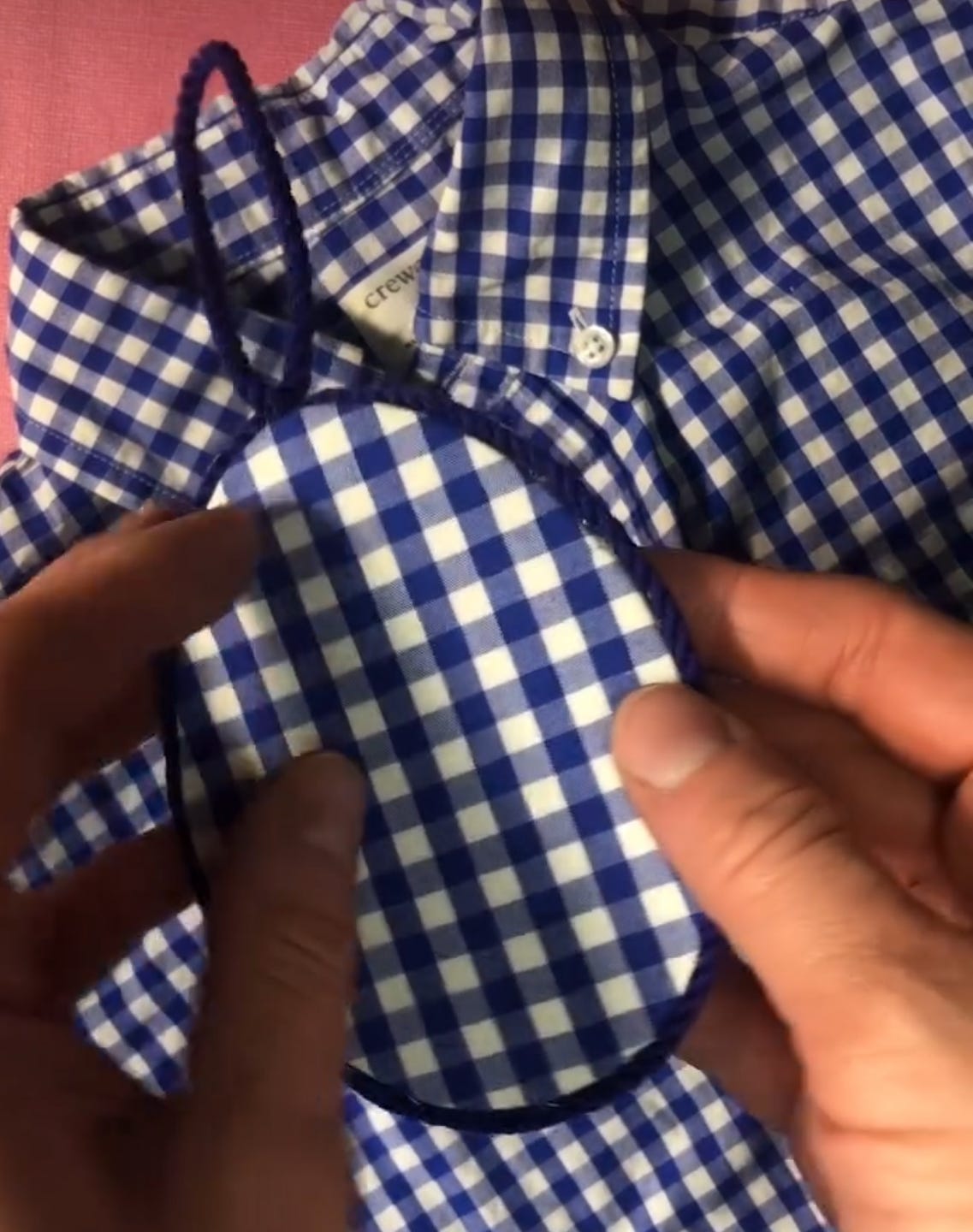
Spoonflower
The online retailer Spoonflower has a print on demand process and thousands of fabric prints and finishes to choose from. They are popular for good reason. You’re looking for:
Material: Petal Signature Cotton
Quantity: A swatch (8x8) is suitable for finishes up to 6x6

Be sure to check the scale and the repeat as many designs are available in various scales. In the example above six hearts would be visible on a 4 inch round. Still adorable, but something to keep in mind.
Spoonflower also offers the ability to upload your own photograph and print on fabric. This is a neat option for people who want to print a vacation photo for first day of school photo on the back.
The printing process does dull the colors a bit and I do not love that. The designs are printed on white fabric and I think they could be brighter and more crisp. Overall an affordable and fun option.
Spoonflower Part 2: Printing Photo Fabric Tutorial & Best Fabrics for Finishing
This is a long post, one that won’t show entirely in your inbox. I hope you jump over to the article on the web to view it’s entirety if the email version is cut off.
Liberty of London Fabrics
These are truly darling florals and if you’re looking for 6x6 cuts that are perfect for most ornaments my friend Andrea of Bateswood Needlepoint has you covered.
Bateswood Needlepoint Fabric Shop
Designer Fabrics
Another great option is designer fabric. Look for small repeats and lightweight fabrics like silk.
I don’t think you get a lot for your money by doing an ornament in a designer fabric, but ordering samples can be an economical way to add a little something extra. I’d personally reserve high end fabrics for pillows, hanging signs, and acrylic foot standups and instead go for a solid color silk on an ornament, hand’s down.
Measuring your fabric
If you’re new to working with a finisher, check with them to see how much material you need to send. I recommend sending at least 6x6 for a 4 inch round to be on the safe side.
Embroidery
Ask your finisher how much you should send to fit in their machine embroidery hoop. They require more fabric.
Self-Welt
Send at least 1/2 a yard since the welt is cut on the bias (diagonally). Check with your finisher if your sign exceeds 6x6 or equivalent.
Patterns
For patterns with a larger repeat, send a little extra so your finisher can line up the design to center properly on the back.
Same measuring guidelines apply if you’re self-finishing your projects.
Finisher’s choice
If you do not send fabric, your finisher may send you a photograph of a few options from my stash and send to you for approval. If you select finisher’s choice, we skip this step and your finisher will pick something perfect for you.
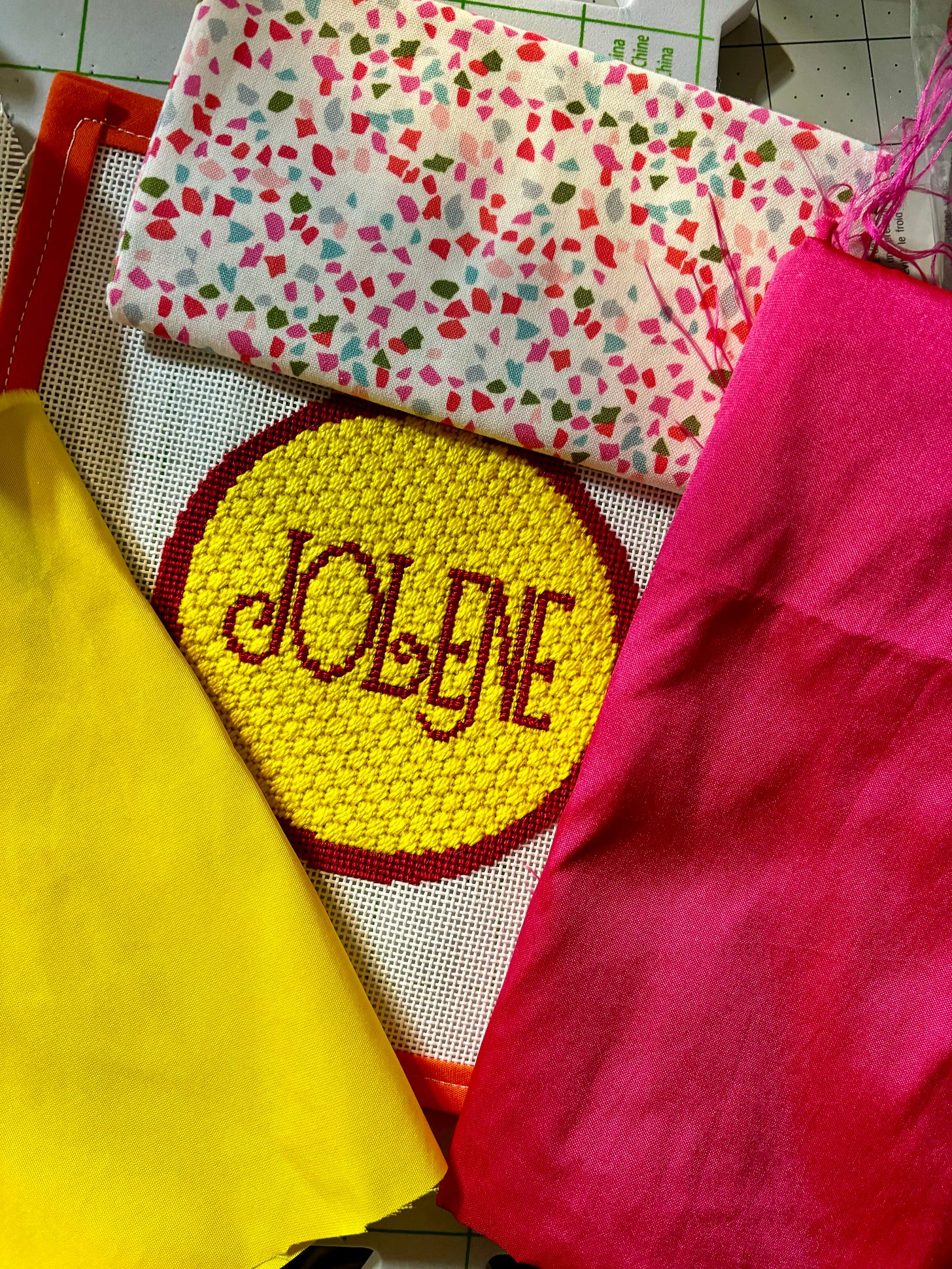
The best fabric sources
Here are my favorite fabric sources.
Your finisher or LNS may not want to share their sources and I get it. Testing fabrics and vendors, scouring the internet, buying trips... these all add up to the value your finisher is providing to you. Personally, I am constantly looking and testing sources and want to share what I uncover!
In Person
Fields Fabrics in West Michigan (#shoplocal) - Silk, Taffeta, higher-end cottons. Any higher-end or large local fabric shop is a must-stop for me.
Joann Fabrics - Cottons and sueded fabrics. Good for basics but I don’t find much beyond that.
Bazar Fabrics in NYC - Silks including dupioni and Silk gingham. They do not have a website but you HAVE to go.
Mood Fabrics (NYC, Miami, LA, and online) - Silk, Taffeta and home decor.
Etsy
Robert Kauffman Velveteen via Hawthorne Fabric on Etsy
Silk via FabricArtists on Etsy. I have tried a lot of silk vendors on Etsy but FabricArtist’s silk is higher quality than others and you can order 1/2 yard quantities. They shipped fairly fast (1 week or so?) direct from India. Shipping is expensive so it’s a good option if you’re buying a lot of colors.
Online
Spoonflower - Cotton and more. They have other fabrics too. Thousands of prints and custom print options
Abigail Cecile - Hand dyed velvets in a variety of colors. She sells individual ornament-sized cuts.
eBay - Check eBay for decorator fabric cuts and sample books
Liberty of London - Duck A Dilly or work with Bateswood who stocks this for her finishing clients
Fabric Wholesale Direct for Dupioni, duck, and cotton poplin
Designer
LA Design Concepts for Scalamandre, Schumacher, groundWORKS and more. Samples are $7.
Ballard for performance fabric and pillows
Caitlin Wilson for grandmillenial vibes
How about you?
Do you like to send your own fabric or have the finisher select a fabric for you? Have you tried other creative materials for backing? I would love to see.










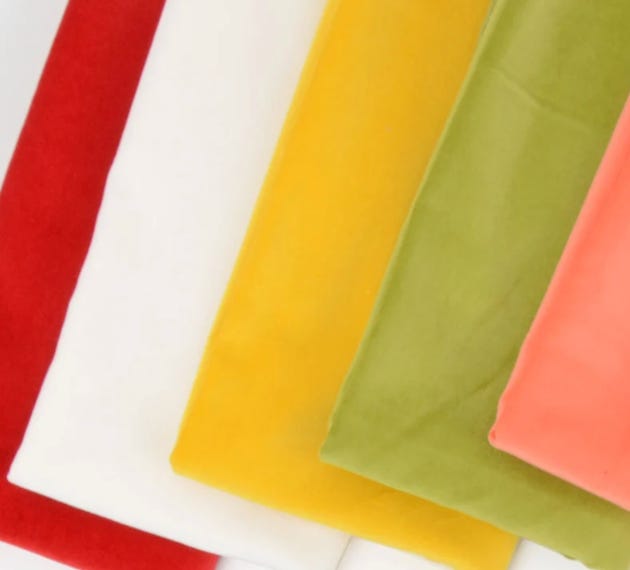
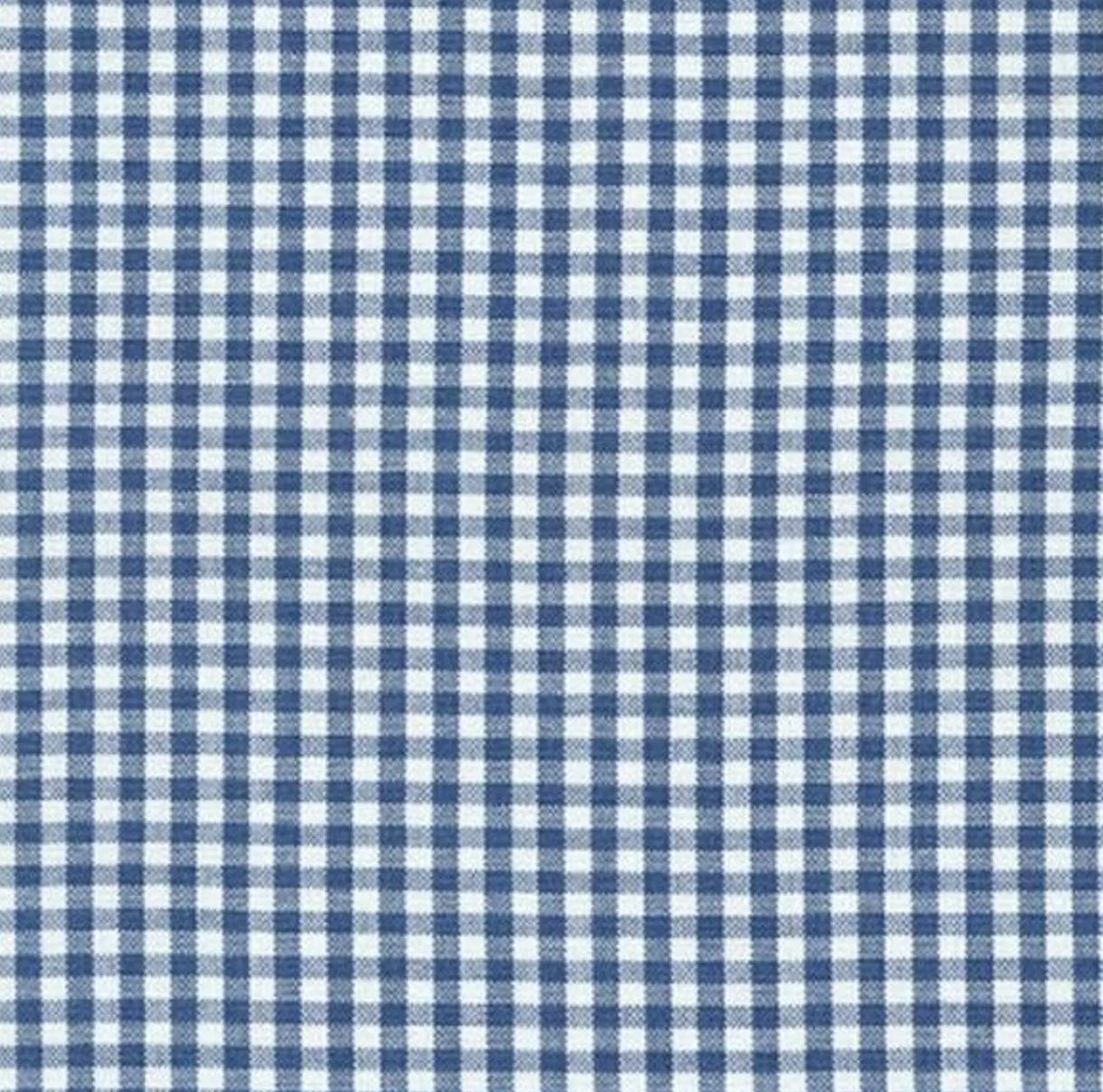


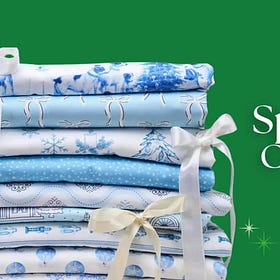

So thorough! I love the pictures of the fabrics too that’s super helpful.
Hi. My question is about rayon cording. Do you use it? Do you know if it is rainbow gallery thread on a spool?